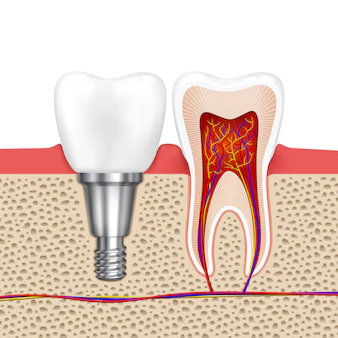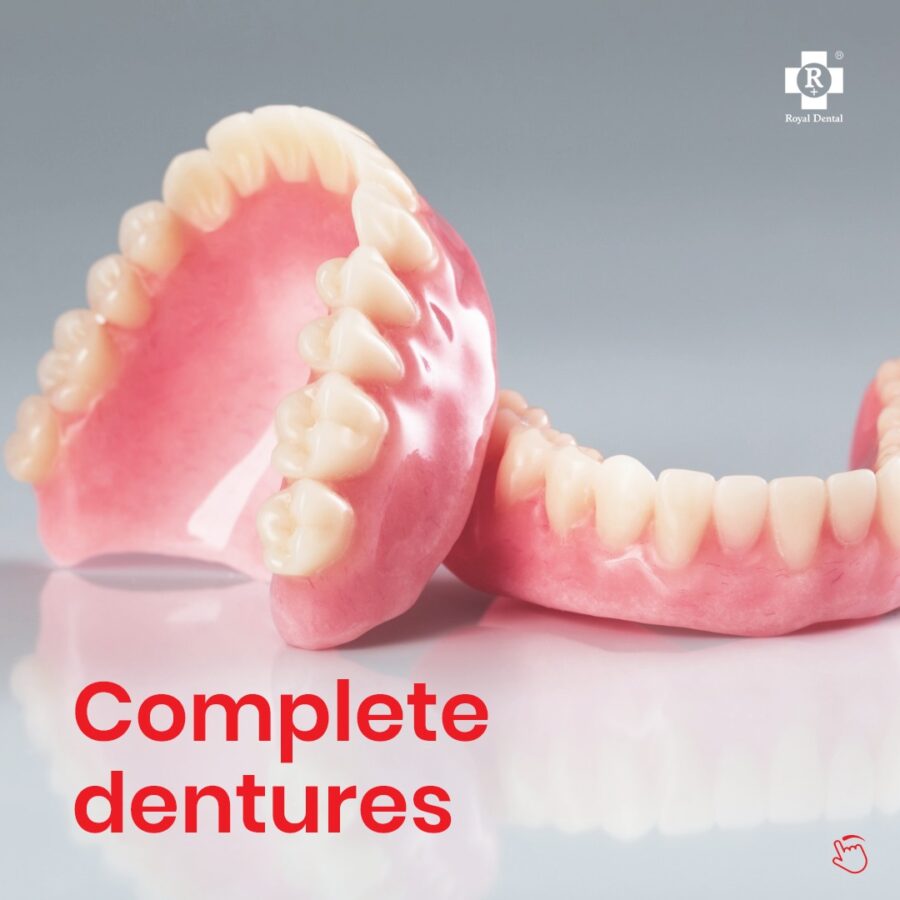When you think of fake teeth, there’s a good chance that the image that springs to mind is one of a misshapen set of dentures. But, in reality, there are plenty of different types of artificial teeth out there. These days, dentures have evolved pretty significantly from the old glue-and-paper versions. Nowadays, there are more comfortable and natural-looking dentures with more durable materials available. Even so, for some people – whether due to illness or an unfortunate accident – false teeth still aren’t an option. In these instances, someone might opt for a type of fake tooth over a dental implant. There are many different types of fake teeth serving a unique purpose. Read on to learn more.
Dental implants
Dental implants are synthetic roots that are implanted into your jaw to serve as a replacement for real teeth. They’re a popular treatment option for people with tooth loss and can be used to replace a single tooth or several teeth, depending on the patient’s dental needs. Although dental implants can be used as part of a full denture, they are typically used in conjunction with a removable partial denture.

This removable partial denture can be taken out at night, allowing the implant to heal properly so it can become firmly fixed in place. When used as a part of a dental implant procedure, fake teeth are usually placed on the gums, rather than the implants. This is done to protect the healing implants and to prevent movement of the false teeth, which could irritate the gums.
Partial dentures
A partial denture is a removable set of artificial teeth that are designed to replace some of the teeth on one or both sides of the lower or upper jaw. Partial dentures typically feature one or two pairs of teeth. Partial dentures are generally used as a short-term solution while the remaining teeth are treated with restorative dental procedures like fillings, root canals, crowns, and implants.
Once the treatment is complete, the partial dentures will be replaced with a permanent set of dentures. Partial dentures are frequently used in conjunction with a retainer, which is a small device that’s worn on the inside of the mouth at night. The retainer is used to hold the dentures in place while the patient sleeps to prevent them from falling out.
Complete denture
A complete denture is a removable set of artificial teeth that replace all of the teeth in the mouth. A full denture can be used as a treatment for a wide range of dental problems, including periodontal diseases, tooth decay, and tooth loss. Dentures are commonly used in conjunction with a gingivitis diet, a retainer, and a set of rubber bands. The gingivitis diet is used to treat and prevent gingivitis, while the retainer is used to hold the dentures in place and to prevent jaw movement that can lead to jawbone atrophy. The rubber bands are used to keep the false teeth in place when chewing food.

Overdentures
An overdenture is a removable denture that’s attached to a few remaining natural teeth via crowns or an implant. Unlike a full denture, an overdenture sits on the gums instead of being fixed to the jawbone. Overdentures are commonly used as a short-term solution for people who are unable to wear a full denture. They’re often used for patients who are waiting for implants or as a transition between removable dentures and natural teeth. Overdentures can be attached to existing crowns or fixed implants to provide support for the false teeth.
Fake teeth for cleft lip and palate cases
Cleft lip and cleft palate cases require a specific type of artificial teeth. These fake teeth, sometimes called a labial frenectomy appliances, are designed to correct a birth defect. They’re fitted to the upper lip and roof of the mouth to close the gap created by the defect. These artificial teeth can be fixed to the lip with an adhesive or a small clip. Cleft lip and palate cases usually need these artificial teeth until they’re around 12 years old.
Conclusion
When you start to look into the different types of fake teeth. It’s easy to see that the range of options available is pretty incredible. And while the most common type of false teeth is still the old-fashioned dentures, advances in dental technology mean that there are now more options available for people with missing teeth. They’re not for everyone, but artificial teeth can be a great way to solve dental problems and improve confidence, especially among children with disfigurements.






